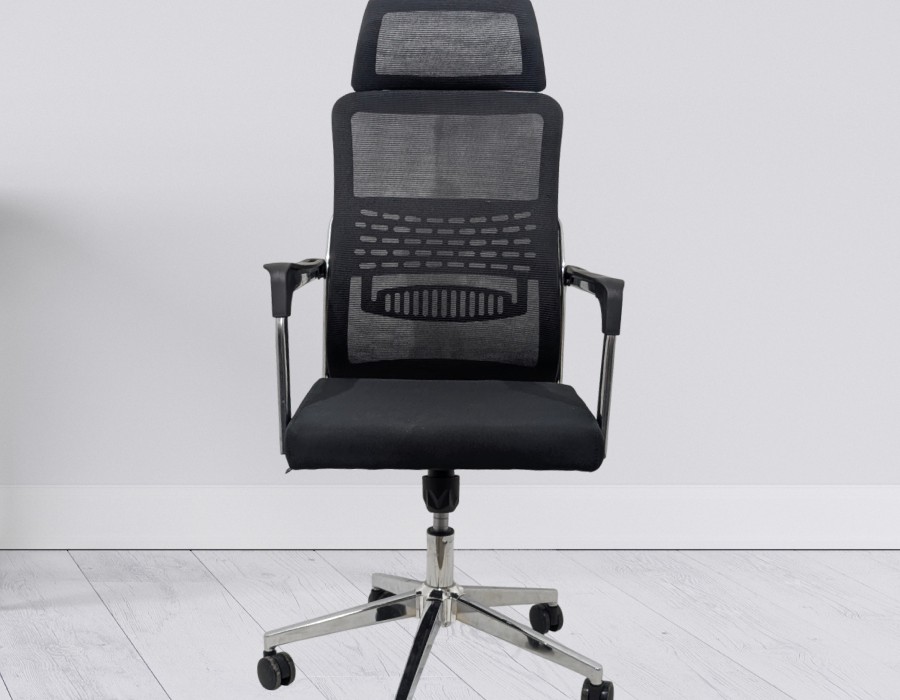In today's fast-paced world, many individuals find themselves spending extended hours seated at their desks. This lifestyle can result in various physical discomforts, particularly back and neck pain. Finding a comfortable office chair is essential for improving work productivity while prioritizing your health. In this article, we will explore the importance of ergonomic seating, features to look for in a comfortable chair, and tips on how to choose the right option for your workspace.
The Importance of Ergonomic Chairs
Ergonomics refers to the science of designing the workplace, keeping in mind the capabilities and limitations of the worker. An ergonomic chair is designed to support the natural posture of your body, reducing the risk of strain and injury during long hours of work.
Health Benefits of Ergonomic Chairs
- Reduced Back Pain: The design of ergonomic chairs promotes proper spinal alignment. By supporting the natural curve of your spine, these chairs help alleviate chronic back pain that often comes from prolonged sitting.
- Improved Posture: Many people tend to slouch in traditional chairs. Ergonomic options encourage an upright posture, which can reduce the strain on your neck and back.
- Decreased Risk of Injury: Poor seating can lead to repetitive strain injuries, such as carpal tunnel syndrome, and exacerbate existing conditions. A well-designed chair can mitigate these risks significantly.
- Enhanced Productivity: Comfortable seating allows you to focus better on your tasks rather than shifting positions to relieve discomfort. This often results in improved work output and performance.
Key Features of a Comfortable Office Chair
When searching for a comfortable office chair, various features should be considered:
Adjustability
A truly comfortable office chair should be adjustable to accommodate different body types and preferences. Look for features such as:
- Height Adjustability: Ensures that your feet can rest flat on the ground, promoting proper posture.
- Armrest Adjustability: Armrests should support your arms without causing strain to your shoulders. Look for adjustable armrests that can be modified in height and width.
- Backrest Tilt: The ability to recline can help alleviate pressure on your lower back and allows for short breaks during intense work sessions.
Lumbar Support
One of the crucial aspects of an ergonomic chair is lumbar support. Look for chairs that offer:
- Adjustable Lumbar Support: This feature allows you to customize the lower back support based on your unique spine curvature.
- Contoured Backrest: A contoured backrest can follow the natural curve of your spine, providing better support and comfort.
Material Quality
The material of the chair can impact both comfort and durability. Consider:
- Breathable Fabrics: Chairs made from mesh or fabric allow for better airflow, keeping you cool and comfortable during long hours of sitting.
- High-Density Foam Padding: Quality foam provides comfort while ensuring the chair maintains its shape over time.
Mobility and Stability
- Swivel Base: A chair that swivels can help you reach different areas of your workspace without straining.
- Rolling Casters: Ensure the chair has smooth-rolling casters to make it easy to move around your office space.
Tips for Choosing the Right Office Chair
Selecting the right office chair goes beyond just considering aesthetic appeal. Here are some essential tips to help you make an informed choice:
Assess Your Workspace
Consider the size of your desk and the amount of space available for a chair. You don’t want to choose a chair that is too large or wide for your workspace. Measure your desk height to ensure that the chair will fit comfortably underneath it.
Test Before You Buy
If possible, try sitting in the chair before purchasing. Pay attention to how it feels when you sit down and whether all adjustable features are easy to use. It can help to spend at least 15-20 minutes testing the chair to gauge its comfort level.
Read Reviews and Ratings
Look for customer reviews and professional ratings of office chairs before making a decision. Feedback can provide valuable insights into long-term comfort and durability that may not be evident during a short trial.
Consider Your Budget
While investing in a quality chair is essential, you don’t have to break the bank. Set a budget and explore options within that range. There are many comfortable office chairs available at various price points.
The Connection Between Comfort and Productivity
A comfortable office chair contributes significantly to overall productivity. Comfort affects not only physical health but also mental well-being. When you are comfortable, you can focus better, think more clearly, and work more efficiently. By reducing distractions related to discomfort, you can maintain your concentration through long hours of work.
Company Culture and Ergonomics
In modern workplaces, there has been an increasing awareness about the importance of ergonomics. Forward-thinking companies are investing in quality office furniture to create a pleasing and health-conscious workspace. Employees working in an environment that prioritizes their comfort are likely to experience higher job satisfaction and loyalty.
Encourage Movement
While having a comfortable chair is vital, it’s equally important to remember to move. Simple strategies can help:
- Regular Breaks: Stand up, stretch, or take a short walk every hour to improve circulation and relieve tension.
- Adjust Your Position: Change your sitting position or alternate sitting and standing if your workspace allows.
Conclusion
Investing in a comfortable office chair not only enhances your well-being but also benefits your overall work productivity. By carefully considering various features and ergonomic benefits, you can find a chair that suits your needs. Whether you’re working from home or in a corporate office, a quality chair can make all the difference. For an extensive range of options tailored to your comfort, explore My Cubicles at mycubicles.com. Your health and productivity are worth the investment!





Comments